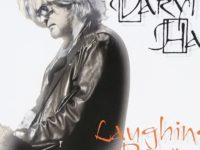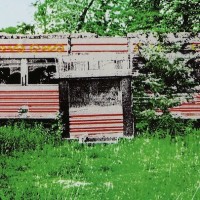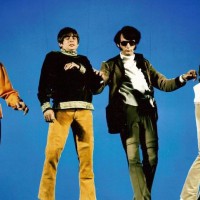At this point, you’ve heard their hits so many times that spelling “Method of Modern Love” is second nature. Time to dig a little deeper into the heady mixture of folk, R&B and rock that is Hall and Oates.
We’re staying well away from familiar moments like “Maneater” and “I Can’t Go For That,” though in both cases we have selected lesser-known tracks from the same albums. We’ve also dug further back into the group’s pre-video era, with three favorites from the 1970s — including one cut from Daryl Hall’s solo debut, which featured the regular H&O band along with Robert Fripp.
Yep, the guy from King Crimson. Turns out, Hall and Oates is a duo that did a lot more experimenting than they were ever given credit for — and, with John Oates’ endlessly varied new singles series, still do — even as they became one of the top-selling act of the 1980s. Before it was over, we’d collected singer-songwriter musings, a blue-eyed soul tribute, a scorching R&B confessional and (no surprise, this is the one with Fripp) something completely out of left field …
“OPEN ALL NIGHT,” (H2O, 1982): In a period when Hall and Oates was moving toward increasingly mechanized music, and ever-goofier videos to boot, a song like “Open All Night” — which closed out Side 1 of H20 — served as this striking reminder of everything that made this duo more than the sum of their MTV-era hits.
Hall’s tortured, utterly unguarded vocal, as deep as any he’d record, allows this cuckold’s lament to connect on an emotional level that big-sellers like “Maneater” and “One on One” (both of which went Top 10, with the former staying at No. 1 for four weeks) simply couldn’t approach. G.E. Smith then adds a scalding turn on guitar before giving way to a billowing keyboard-driven coda, this series of classic improvisations from Hall and — finally — a jealously paranoid “don’t-ask-me-to-tell-you; no-I-don’t-want-to-tell-you” chorus, brilliantly intertwined with Oates.
Anybody who says Hall and Oates had lost whatever R&B grit they’d once boasted by this point needs only cue up “Open All Night.” The song, and the side, come to a stark and ominous close — emblematic, really, of the darker tone that pervaded the often-muted H20, but also of this group’s enduring powers.
[SOMETHING ELSE! REWIND: ‘Laughing Down Crying’ found Daryl Hall taking an uncharacteristically loose approach – much like his addictively watchable webcast ‘Live from Daryl’s House.’]
“LOOKING FOR A GOOD SIGN,” (PRIVATE EYES, 1981): After years of fiddling with everything from dewy-eyed singer-songwriter atmospherics to glam pop, Hall and Oates finally found their sweet-spot synthesis with Private Eyes. To the point where even the throwaway songs on a career-defining record might have been smash-hit earworms for lesser acts.
“Looking for a Good Sign” is one of them, a lithe Motown-inspired piece dedicated to the original Temptations that was quickly overshadowed by a pair of No. 1 tunes in “Private Eyes” and “I Can’t Go For That,” not to mention charting songs “Did It In A Minute” and “Your Imagination.” For a time, this stuff was wallpapered across the radio, as Private Eyes became Hall and Oates’ first-ever Top 10 album. No surprise, I suppose, that “Looking for a Good Sign” is now largely forgotten.
Still, on their biggest and perhaps most artistically complete recording, it’s a track I come back to often. Whereas much of Private Eyes fulfills the promise of Hall and Oates’ still-emerging experimentation with modern popcraft, this one goes right to the heart of what made them special in the first place: Sidewalk soul set to unforgettable hooks. They’d return to this template later, after a number of other big hits, with appearances alongside David Ruffin and Eddie Kendricks — never having gotten, they insisted, close to the originals. I don’t know. For me, this tribute got there.
[SOMETHING ELSE! INTERVIEW: John Oates, in discussing the ‘Good Road to Follow’ project, admits that ‘really, it’s uncharted territory’ – and he wouldn’t have it any other way.]
“HAD I KNOWN YOU BETTER THEN,” (ABANDONED LUNCHEONETTE, 1973): Some fans — or at least those who only know Oates for co-written 1980s-era hits like “I Can’t Go For That” and “Maneater” — might be surprised by the rootsier turn that he’s taken lately.
But the seeds of both Oates’ 2011 blues-focused release Mississippi Mile and his on-going Americana-inspired Good Road to Follow series can be found on this sophomore Hall and Oates release, and songs like the bucolic “Had I Known You Better Then.”
“I met Daryl when I was 19 years old, but I had been playing music since I was six. I had an entire life, and that life prior to Hall and Oates was really roots-based, blues-based, folk, traditional American music — and R&B,” Oates tells us, in an exclusive SER Sitdown. “It’s funny, though: I’ve always had the same dichotomy, kind of a musical split personality, even back then. When I was kid, I’d be playing in a coffee house in the early 1960s, and doing folk or blues. Then I would put on a shark-skin suit and play with an R&B band the next week. That has always been my M.O.; it never really changed. When I met Daryl, that’s what I kind of brought to the table. Daryl brought more of an urban, doo-wop kind of thing — and a little more musical sophistication, being a schooled music major and a piano player. Then we blended those two things together.”
[SOMETHING ELSE! REWIND: John Oates hints that Hall and Oates won’t be entering the recording studio again, admitting that the duo seems to be ‘going in different directions’ right now.]
“BABS AND BABS/URBAN LANDSCAPE,” (SACRED SONGS, 1980): Hall and Oates meets King Crimson? Well, yeah: Daryl Hall has said he and Robert Fripp were trying to “take two soulful sounds from two different cultures, and put them together, and form a third kind of music.” Really, Daryl’s initial solo release works as a kind of bridge between Rick Wakeman-era Yes and Trevor Horn-era Yes. At the time, though, Sacred Songs seemed to many a confusing and fascinating mess — sometimes, as in this song, all at once.
“Babs and Babs” starts innocuously enough, with a urbane groove (provided in overdubs by the H&O touring band) and a knowing, street-wise lyric that recalls any number of the group’s other hair-gelled R&B updates. But then producer/guitarist Fripp begins pasting on a series of wow-man elements never dreamt of on an Hall and Oates-related release — well, with the possible exception of the unjustly overlooked Todd Rundgren-produced 1974 oddity War Babies. First, a jagged Fripp solo sparks this soaring, metronomic crescendo, which is then in turn subsumed by a turbulent ambience over the song’s middle. Hall returns with a more aggressive approach to the lyric, singing outside of his comfort zone, really letting himself go. At the dawn of a decade that will find him too often inhabiting a mannered, made-for-MTV machismo, Hall is pushed into a new, very real vulnerability. Meanwhile, his song, now in a gorgeous, unflinching freefall, is surrounded by this sizzling swirl of reverb as “Babs and Babs” morphs into “Urban Landscape.” The resulting extended instrumental passage, as beautiful as it is surprising, finds Fripp for the first time employing tape-loop technology that he dubbed Frippertronics.
“Oh,” Fripp has said, “what a sweet tension that was, over a sixteen-bar drum break on ‘Babs And Babs,’ a song of schizophrenia.” Along the way, he shoots the album a couple of worlds away from contemporary H&O hits like “Rich Girl.” Hall’s record company, of course, had no idea what to do with this — and sat on these recordings for three long years. Even by 1980, however, nobody had quite caught up to the inventive pastiche (prog rock-pop?) found on Sacred Songs. But they would. Ask Trevor Horn.
[SOMETHING ELSE! REWIND: John Oates discusses his terrific 2011 solo effort ‘Mississippi Mile,’ as well as career memories with Daryl Hall, Todd Rundgren, the Temptations – and the blues.]
“DO WHAT TOU WANT, BE WHAT YOU ARE,” (BIGGER THAN BOTH OF US, 1976): This track would later serve as the title of a massive retrospective box set focusing on Hall and Oates’ work together — though it largely got lost at the time of its release as part of this 1976 album in the buzz surrounding “Rich Girl,” the first of what would become six No. 1 singles for Hall and Oates.
“That’s who we are,” Oates tells us. “If you look back at our careers, we’ve done weird stuff. We were completely outside the box in a lot of ways — from Whole Oats and Abandoned Luncheonette to War Babies then to recording in LA and wearing makeup, then hard rock — and pop. We look at ourselves as musicians, and we don’t really care about categories. The world does, and we try to work with it. But we’ve always been very independent, and I think only now are we being appreciated for that independence. Unfortunately, if we were starting out in today’s world, we would never have made it — because of that very fact. I’m just kind of doing what I feel like doing, and I am very fortunate that I’m allowed to do that.”
Along the way, “Do What You Want, Be What You Are” became something of a rallying cry for Hall and Oates as they made a series of musical turns — some successful, some not, but all of them interesting — based on nothing more than following their muses. Certainly, that’s the case again with Oates’ current decision to forgo the traditional album format in favor of a series of solo singles.
- How Deep Cuts on ‘Music From Big Pink’ Underscore the Band’s Triumph - July 31, 2023
- How ‘Islands’ Signaled the Sad End of the Band’s Five-Man Edition - March 15, 2022
- The Band’s ‘Christmas Must Be Tonight’ Remains an Unjustly Overlooked Holiday Classic - December 25, 2016




